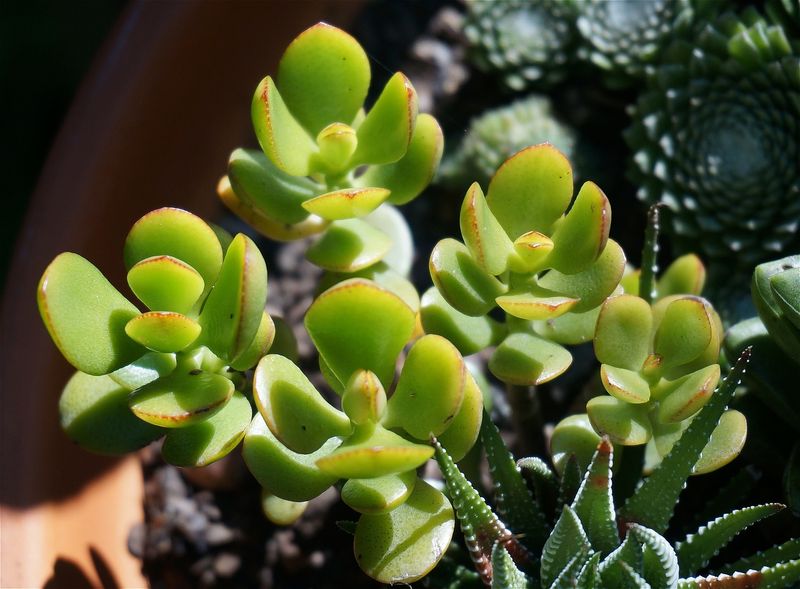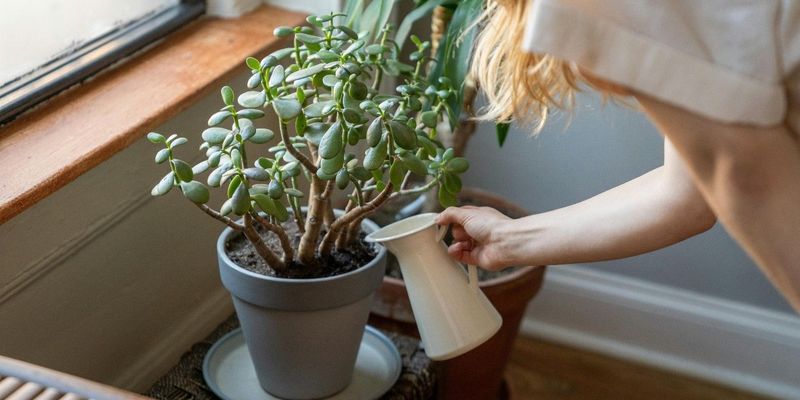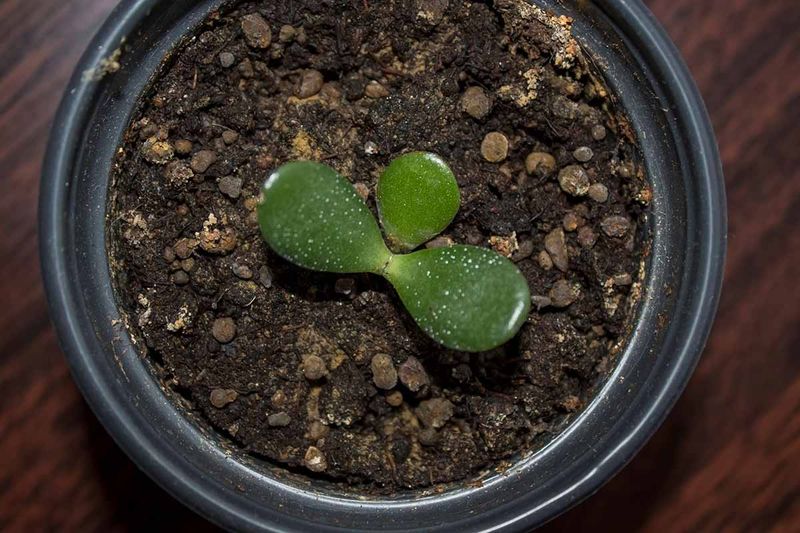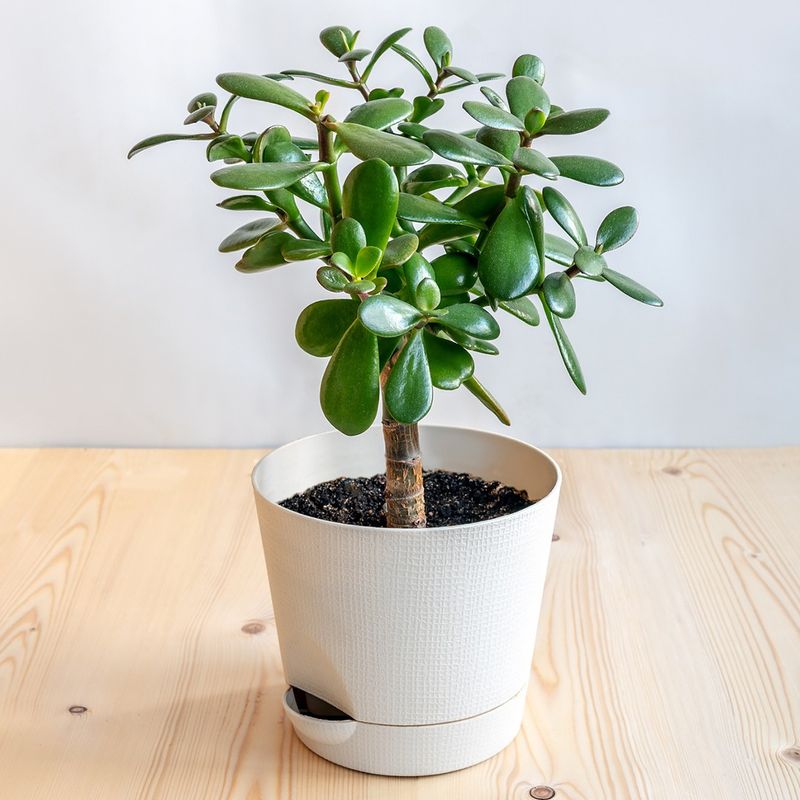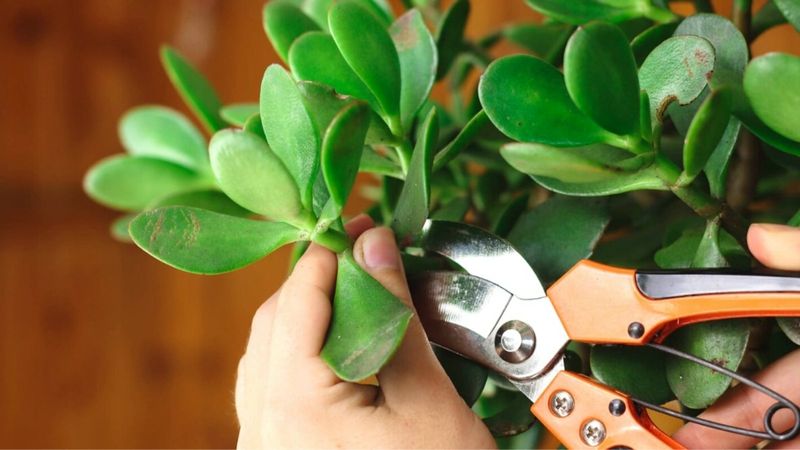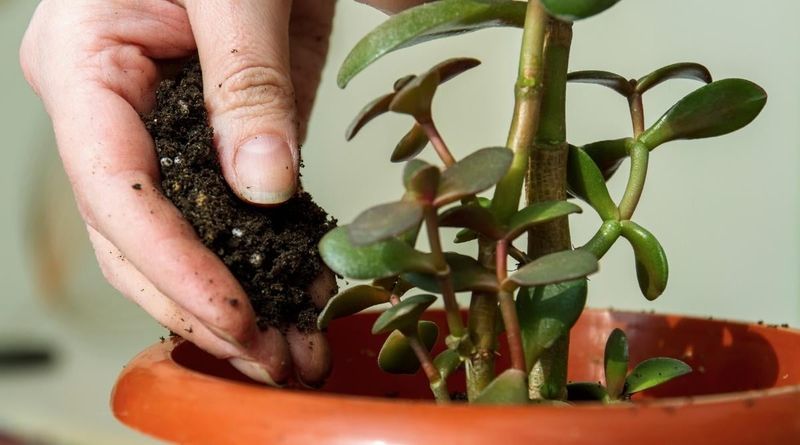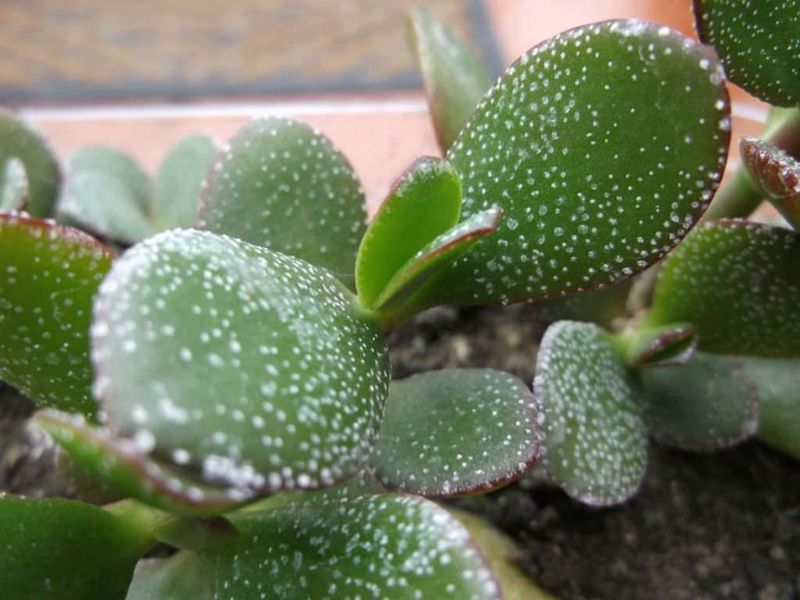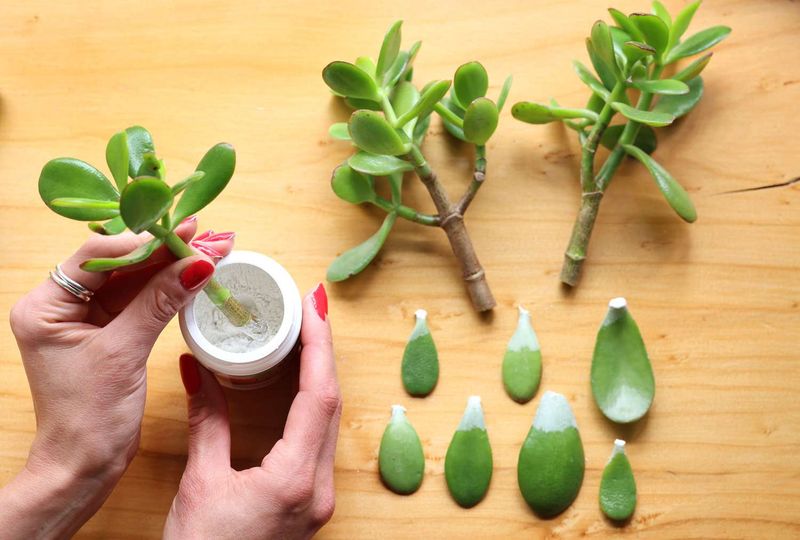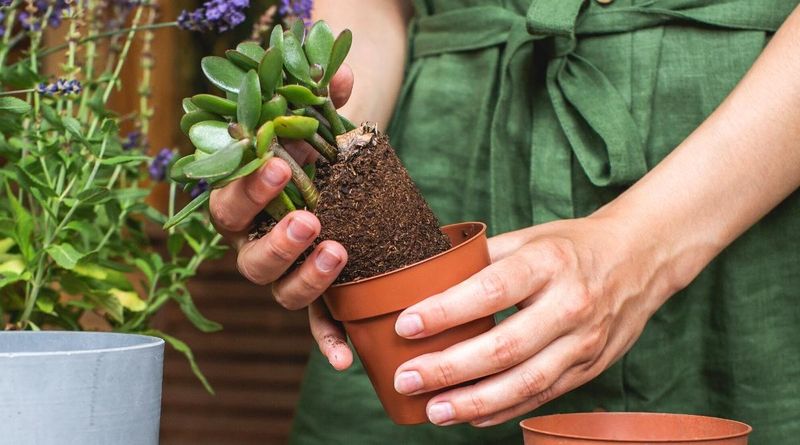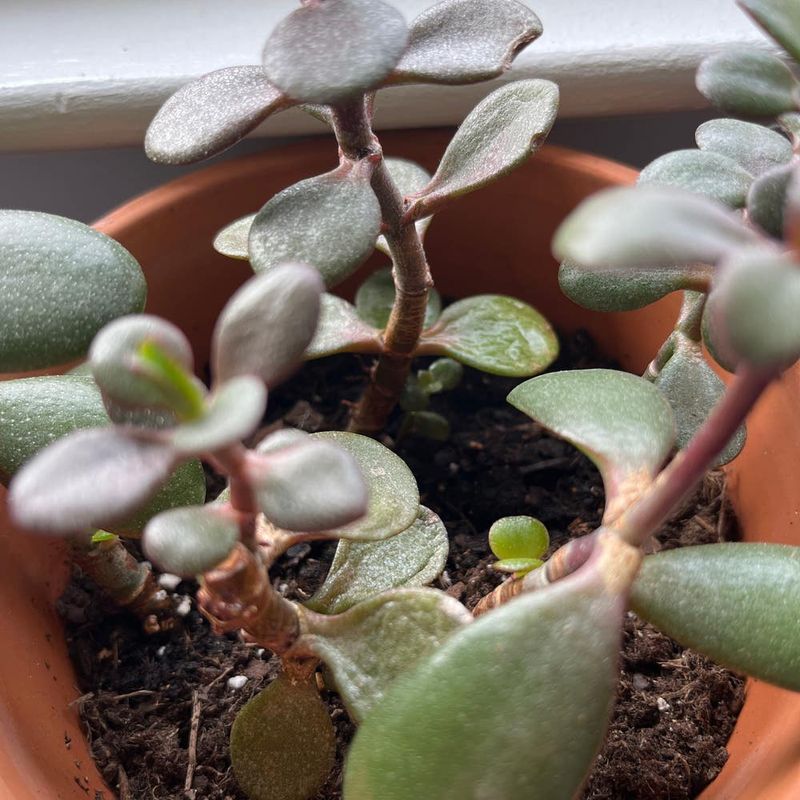In the enchanting world of succulents, jade plants stand out as timeless beauties. Known for their resilience and unique charm, they are a favorite among both novice and seasoned gardeners.
But, to truly let your jade plant thrive, understanding its care requirements is essential. Here, we’ve compiled 10 expert tips to help your jade plant flourish, ensuring it remains healthy and vibrant.
Whether you’re a budding plant enthusiast or an experienced gardener, these insights will guide you in cultivating a jade plant that’s a true testament to nature’s elegance.
1. Proper Lighting
Adequate lighting is crucial for jade plants to thrive. Place your jade plant in a spot where it can receive bright, indirect sunlight; a south-facing window is ideal.
While they enjoy basking in the sun, harsh direct sunlight can scorch their leaves. If your plant’s leaves start turning red or brown, it may be a sign of too much sunlight. Conversely, if they become elongated and sparse, they may need more light.
Move your plant as needed to maintain optimal lighting. Regularly rotate your plant to ensure even growth and prevent leaning.
2. Watering Routine
Mastering the watering routine is key to jade plant care. Jade plants prefer their soil to dry out completely between waterings. Overwatering can lead to root rot, a common issue with succulents.
Check the soil moisture by sticking your finger an inch deep; if it’s dry, it’s time to water. Use room-temperature water to avoid shocking the plant. During the growing season, water more frequently, reducing the frequency during winter.
Each jade plant may have slightly different needs, so adapt your watering schedule accordingly. Consistent yet sparing watering is the secret.
3. Soil Preferences
The right soil mix ensures your jade plant’s success. These succulents prefer well-draining soil, typically a cactus or succulent mix. Such soil prevents water from lingering, reducing the risk of root rot.
You can enhance drainage by adding perlite or coarse sand. Jade plants are not fond of heavy soils, which retain moisture and hinder growth. If repotting, choose a pot with drainage holes to further aid in water management.
Refresh the soil every couple of years to maintain nutrient levels and promote healthy roots. A good soil foundation is vital.
4. Temperature Needs
Temperature can greatly influence your jade plant’s health. Ideally, they thrive in temperatures ranging from 65 to 75°F. While they can tolerate occasional drops, prolonged exposure to cold can damage them.
Winter drafts and sudden temperature changes are particularly harmful. During warmer months, your jade plant can enjoy time outdoors. However, ensure it’s protected from frost and excessive rain.
Indoor settings typically provide a stable environment, ideal for jade plants. Monitoring temperature helps prevent stress. A consistent climate promotes vibrant growth and longevity.
5. Pruning Practices
Pruning is an essential aspect of jade plant care. It encourages bushier growth, helping your plant maintain its shape. Use sharp, sterilized scissors to prevent disease transmission when pruning.
Remove dead or yellowing leaves to direct energy towards new growth. Regularly pinching back the tips of branches can stimulate fuller foliage. Pruning also allows for better airflow, reducing the risk of pests and diseases.
Avoid over-pruning, as it can stress the plant. Instead, focus on strategic trims to enhance its aesthetic appeal. Thoughtful pruning keeps your jade plant looking its best.
6. Fertilization Tips
Fertilization boosts your jade plant’s vitality. During the growing season, feed your plant with a balanced, water-soluble fertilizer formulated for succulents. Use it sparingly, as jade plants are not heavy feeders.
Too much fertilizer can lead to salt buildup, harming the roots. Apply it once a month in spring and summer, tapering off in fall. Always follow the instructions on the fertilizer package for best results. Diluting the fertilizer can prevent overfeeding.
A little nourishment goes a long way in promoting lush, vigorous growth. Keep your jade plant happily fed.
7. Pest Management
Jade plants, like all succulents, can sometimes attract pests. Common culprits include mealybugs and spider mites. Regularly inspect your plant, especially the undersides of leaves. Early detection is key to preventing infestations.
If you spot pests, gently wipe them away with a cotton swab dipped in alcohol. For severe cases, consider insecticidal soap or neem oil. Maintain plant health to deter pests naturally; stressed plants are more susceptible.
Good air circulation and cleanliness further help prevent issues. Keeping an eye on your jade plant ensures a pest-free environment.
8. Propagation Techniques
Propagation lets you expand your jade plant collection easily. Simply take a healthy leaf or stem cutting and let it dry for a few days.
This process, called callusing, prevents rot. Once dry, place the cutting in well-draining soil, water lightly, and wait. Roots should begin to form in a few weeks. Bright, indirect sunlight aids the process. Patience is necessary, as new growth can take time.
Propagation also allows for experimentation with different potting setups. Sharing propagated jade plants is a wonderful way to spread greenery. Enjoy growing your collection!
9. Repotting Guidelines
Repotting keeps your jade plant thriving by providing room for growth. Typically, repot every two to three years or when roots outgrow their pot. Choose a container slightly larger than the current one, ensuring it has drainage holes.
Carefully remove the plant, shaking off excess soil, and inspect the roots for health. Trim any dead or rotting roots before placing it in fresh soil.
Be gentle to avoid damaging the root system. After repotting, allow the plant to settle for a week before resuming regular watering. Proper repotting extends your jade plant’s life.
10. Humidity Considerations
Humidity levels affect jade plant health. While they can tolerate low humidity, very dry air can cause leaf drop. A moderate humidity level of around 30-50% is ideal. Indoor environments during winter can be particularly dry, so consider using a humidifier.
Alternatively, place a tray of water near your plant to increase moisture through evaporation. Misting is generally unnecessary and can lead to fungal issues.
Observing your plant’s reaction to different humidity levels helps tailor its care. Balanced humidity supports lush, vibrant foliage. Keep your jade plant comfortable year-round.

